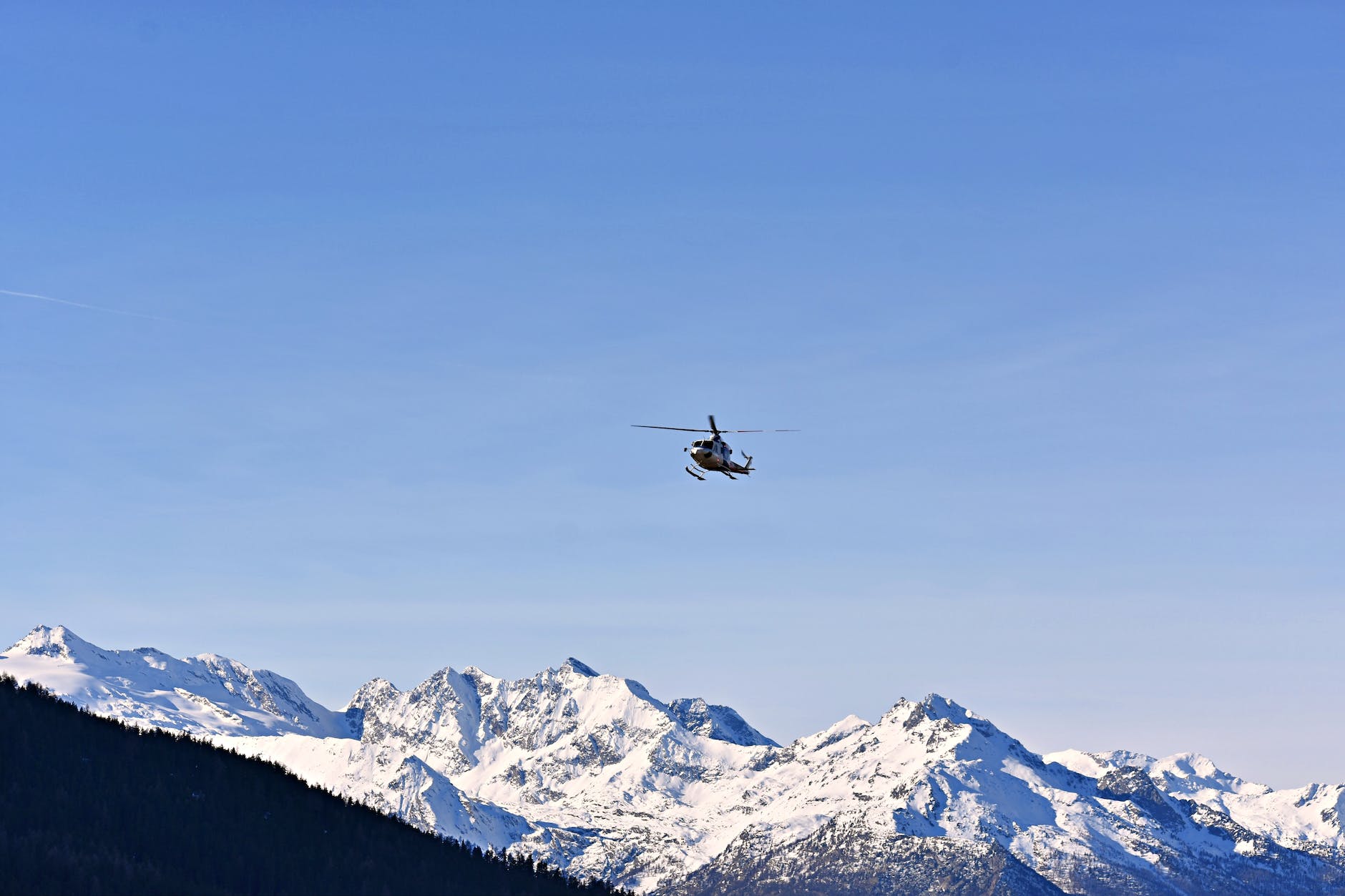
When embarking on outdoor adventures, it is essential to be prepared for the unexpected. Mother nature can be unpredictable, and while exploring the great outdoors can be exhilarating, it also comes with its fair share of risks and challenges. Whether you are planning a hiking trip, camping expedition, or any other outdoor activity, having a solid emergency preparedness plan in place is crucial to ensure your safety and well-being. In this article, we will discuss some vital emergency preparedness tips that will help you navigate through unforeseen circumstances and enjoy your outdoor adventures with peace of mind.
Research and Planning
Before setting off on any outdoor adventure, it is imperative to do thorough research and plan accordingly. This includes gathering information about the location, weather conditions, and any potential risks or hazards that you may encounter along the way. By taking the time to educate yourself about the area you will be visiting, you can better prepare yourself for any unexpected situations that may arise.
Outdoor adventure
Start by researching the destination and familiarize yourself with the area’s terrain, climate, and local regulations. This will help you understand what to expect and allow you to pack the necessary gear and clothing. Additionally, find out if there are any potential hazards such as wildlife, poisonous plants, or extreme weather conditions that you need to be aware of.
Emergency preparedness plan
Once you have gathered all the necessary information, create an emergency preparedness plan. This plan should outline the steps you will take in case of an emergency and include important contact numbers, emergency services, and nearby medical facilities. Make sure to share this plan with someone you trust who is not joining you on the adventure, so that they can be aware of your whereabouts and take appropriate action if needed.
Weather conditions
Keep a close eye on the weather forecast leading up to your outdoor adventure. Weather conditions can change rapidly, and it is crucial to be aware of any potential storms, extreme temperatures, or other weather-related risks. If adverse weather is expected, consider rescheduling your trip or adjusting your plans accordingly to ensure your safety.
Potential risks
Identify the potential risks and hazards that could arise during your outdoor adventure and plan accordingly. For example, if you are hiking in bear country, it is essential to know how to safely store and handle food to avoid attracting wildlife. If you will be camping in a remote area, learn how to build a fire safely and be prepared with a first aid kit for any minor injuries that may occur.
By conducting thorough research and planning, you can significantly reduce the chances of encountering unexpected situations during your outdoor adventure. Being well-informed and prepared will not only enhance your safety but also allow you to fully immerse yourself in the natural beauty of your surroundings. Stay tuned for the next part of this article, where we will discuss essential items to pack for emergency preparedness during outdoor adventures.
Essential Gear for Outdoor Adventures
When it comes to outdoor adventures, having the right gear is crucial for staying safe and prepared. In this section, we will discuss some essential gear that you should always have with you when venturing into the great outdoors.
1. Navigation Tools
One of the most important aspects of being prepared for the unexpected is knowing where you are and how to get to safety. A reliable map and compass are essential tools that should always be in your backpack. Make sure you know how to use them properly and practice your navigation skills before heading out on your adventure. Additionally, consider bringing a GPS device or a smartphone with a map application as a backup.
2. First Aid Kit
Accidents can happen anytime, anywhere, so having a well-stocked first aid kit is essential. Your kit should include adhesive bandages, sterile gauze pads, antiseptic wipes, adhesive tape, pain relievers, tweezers, scissors, and any necessary personal medications. It is also a good idea to take a first aid course to learn basic emergency procedures and techniques.
3. Shelter
In case you find yourself stranded or lost, having a shelter can make a significant difference in your survival. A lightweight and compact emergency shelter, such as a tent or a bivvy sack, should be part of your gear. These shelters can provide protection from the elements and help keep you warm and dry until help arrives.
4. Firestarter Tools
Fire can be a lifesaver in emergency situations. Always carry waterproof matches, a lighter, or a fire starter kit in your backpack. Additionally, it is essential to familiarize yourself with fire safety techniques and learn how to properly start and maintain a fire. Remember to check local regulations and restrictions before starting a fire.
5. Water and Food
Staying hydrated and well-nourished is crucial for your overall well-being, especially in emergencies. Carry a sufficient amount of water in reusable bottles or hydration packs. Additionally, pack lightweight, non-perishable food items such as energy bars, trail mix, and freeze-dried meals. Make sure to have enough supplies to last for the duration of your adventure, and consider bringing a water filtration system or water purification tablets as a backup.
6. Extra Clothing and Layers
Weather conditions can change rapidly, especially in outdoor settings. Always pack extra clothing layers to ensure you can adapt to changing temperatures. Include a waterproof and windproof jacket, thermal base layers, extra socks, and a hat to protect yourself from the elements. Dressing in layers will allow you to regulate your body temperature more effectively.
7. Lighting Tools
Having reliable lighting tools is crucial, especially if you find yourself stranded or lost during the night. Carry a headlamp or a flashlight with extra batteries to ensure visibility in low-light conditions. Additionally, consider bringing a whistle or a signaling device to attract attention if needed.
8. Communication Devices
In case of an emergency, being able to communicate with the outside world is vital. Carry a fully charged mobile phone or a two-way radio with you. Keep in mind that in remote areas, cellular service may not be available, so consider investing in a satellite phone or a personal locator beacon (PLB) for added safety.
By equipping yourself with these essential gear items, you will be better prepared to handle unexpected situations during your outdoor adventures. Remember to regularly check and maintain your gear, ensuring it is in good working condition before each trip. In the next section, we will discuss some important skills and knowledge that can further enhance your preparedness.
Essential Gear for Outdoor Emergency Preparedness
When venturing into the great outdoors, it is crucial to have the right gear to handle unexpected situations. In this section, we will discuss some essential items that you should include in your outdoor emergency preparedness kit.
- First Aid Kit: A well-stocked first aid kit is a must-have for any outdoor adventure. Make sure to include bandages, antiseptic wipes, gauze pads, adhesive tape, pain relievers, tweezers, and any necessary prescription medications. Additionally, consider including items such as emergency blankets and a CPR mask.
- Emergency Communication Device: In case of an emergency, it is vital to have a reliable means of communication. A fully charged cell phone can be useful but may not have signal coverage in remote areas. Consider investing in a satellite phone or a personal locator beacon (PLB), which can transmit distress signals to emergency responders even in areas without cell service.
- Navigation Tools: Getting lost in the wilderness can be disorienting and dangerous. Carry a map and compass, and make sure you know how to use them. Additionally, consider having a GPS device or a GPS-enabled smartwatch as a backup. Familiarize yourself with the area and plan your route in advance to minimize the risk of getting lost.
- Fire Starter Kit: Fire can be a lifesaver in emergency situations. Pack waterproof matches, a lighter, and fire-starting materials such as tinder or fire starter sticks. Ensure you know how to safely start a fire and follow Leave No Trace principles when doing so.
- Emergency Shelter: Having a reliable emergency shelter can provide protection from extreme weather conditions. Pack a lightweight, waterproof tent, a tarp, or an emergency bivvy. Learn how to set up your shelter quickly to stay dry and warm in case of an unexpected overnight stay.
- Extra Food and Water: Always carry extra food and water in case your adventure takes longer than expected. Pack lightweight, non-perishable food items such as energy bars, dried fruits, and nuts. Consider using water filtration systems or water purification tablets to ensure a safe drinking water supply.
- Multi-Tool: A multi-tool can be a versatile and compact tool for various outdoor tasks. Look for one that includes a knife, pliers, screwdrivers, scissors, and other essential tools. It can come in handy for repairs, opening cans, or any other unforeseen situations.
- Headlamp or Flashlight: A reliable light source is essential for navigating in the dark or during emergencies. Carry a lightweight headlamp or flashlight with extra batteries. LED lights are energy-efficient and provide longer battery life.
Remember, having the right gear is essential, but knowing how to use it is equally important. Take the time to familiarize yourself with the items in your emergency kit and practice using them before heading out on your outdoor adventure.
Conclusion
Preparing for the unexpected is crucial when embarking on outdoor adventures. By following the tips and guidelines outlined in this article, you can enhance your emergency preparedness and ensure a safer and more enjoyable outdoor experience.
Remember to plan ahead, research the area, inform others about your plans, and carry the necessary gear. Stay informed about weather conditions and potential hazards, and always trust your instincts when it comes to safety.
Outdoor activities offer incredible opportunities for adventure and personal growth, but being prepared for emergencies is essential to mitigate risks. By prioritizing emergency preparedness, you can set yourself up for a successful and safe outdoor adventure. So, get out there, explore, and enjoy nature, but always be prepared for the unexpected.

Recent Comments